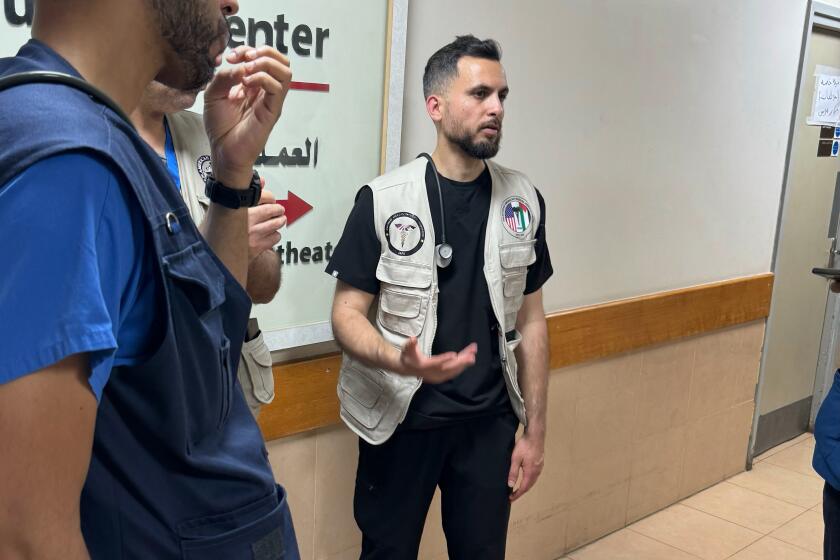With Seniors and Shoes, Safety Comes First
The American Academy of Orthopaedic Surgeons is worried about the feet of our nation’s elderly--and with good reason.
More than 11 million older people have foot problems, the academy says, adding that 28% of seniors surveyed believe they fell last year because of improper footwear. Most of those people, the academy notes, were wearing “sturdy shoes.”
These findings were presented last week at Orthopaedics Update ‘97, an annual meeting for science writers. Here are the academy’s 10 points of senior shoe safety:
* Shoes should provide traction, but not have heavy rubber soles that curl over the top of the toe, like running shoes.
* Avoid shoes with heavy rubber ridges that can catch on flooring, especially carpet.
* Shoes with tied laces are safer because they don’t fall off and can be adjusted to accommodate swelling, orthotics or braces.
* Do not wear shoes with slippery, worn soles.
* Do not wear loose or poorly fitting shoes. The heel should fit snugly without slipping.
* Do not wear smooth leather or rubber soles when walking on wet or slippery surfaces.
* Avoid shoes with too much cushioning--they may be too soft or unstable.
* When buying shoes, go shopping at the end of the day because feet swell and get larger after standing or sitting during the day.
* Have your feet measured every time you buy shoes. Foot sizes tend to change over the years. Choose properly fitting shoes that conform to the natural shape of your foot.
* Shoes should be comfortable when you try them on. Don’t expect them to stretch.
For a free “Don’t Let a Fall Be Your Last Trip” brochure, call the academy at (800) 824-BONES, or send a stamped, self-addressed business-size envelope to “Don’t Let a Fall Be Your Last Trip,” American Academy of Orthopaedic Surgeons, P.O. Box 1998, Des Plaines, IL 60017.
More to Read
Start your day right
Sign up for Essential California for news, features and recommendations from the L.A. Times and beyond in your inbox six days a week.
You may occasionally receive promotional content from the Los Angeles Times.






